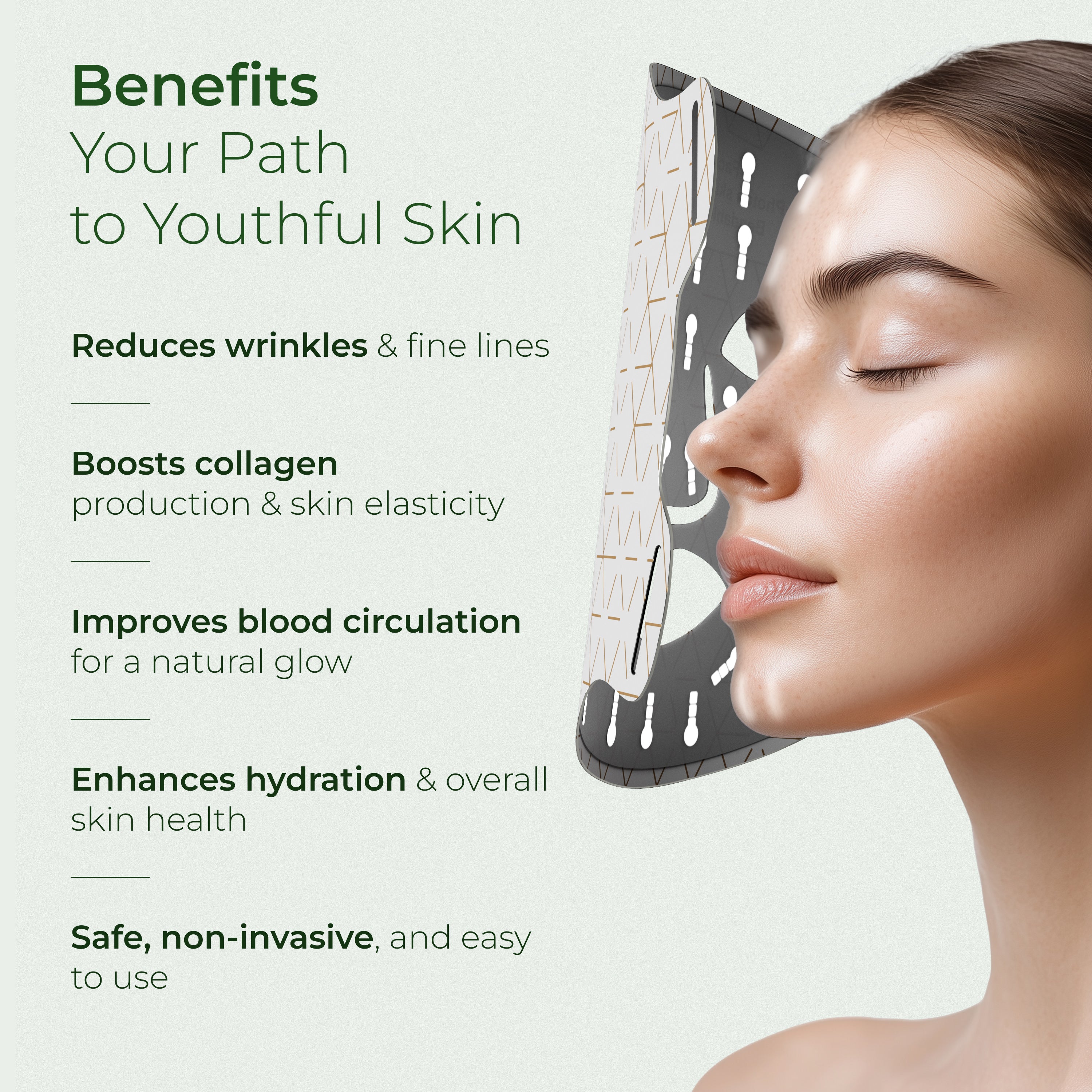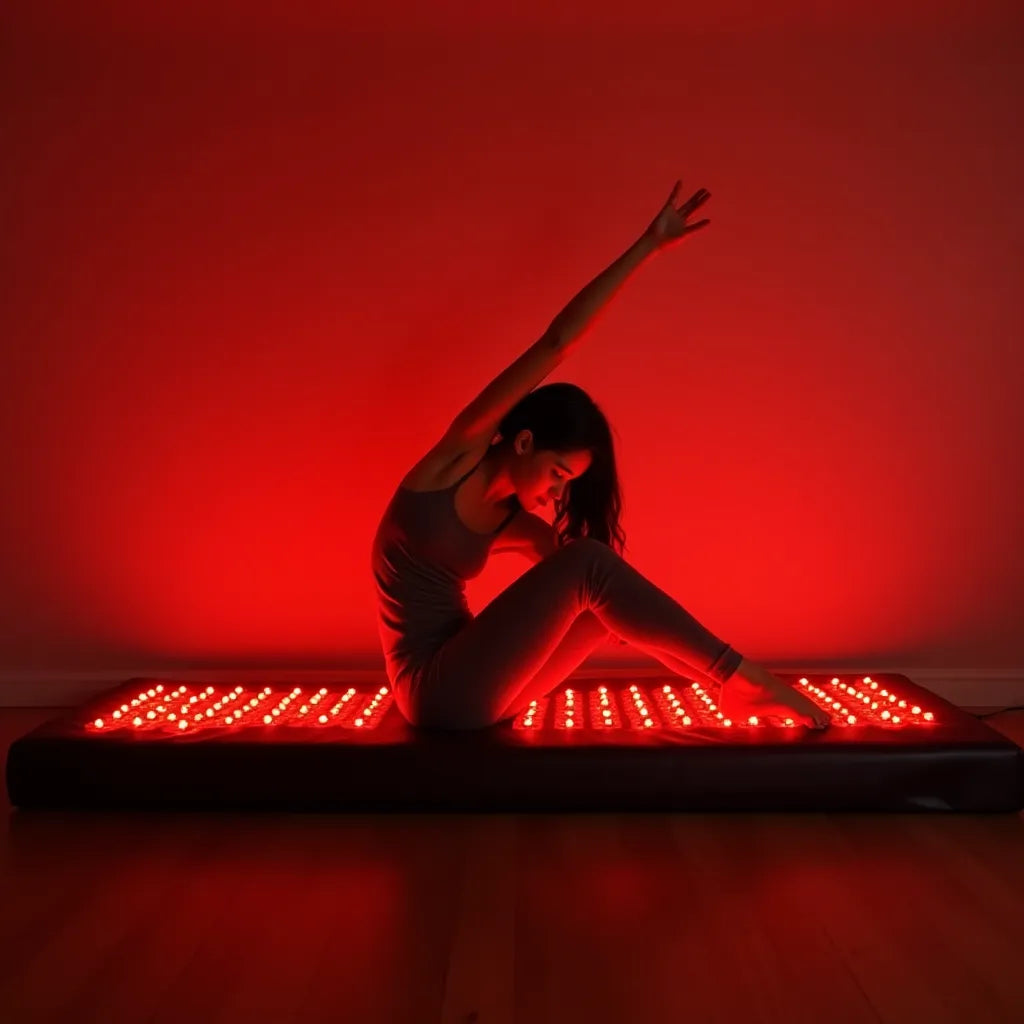Red light therapy bulbs are revolutionizing home wellness routines by providing therapeutic benefits for skin health, pain relief, and more. With diverse options and technologies like LEDs, near-infrared light, and adjustable clamp lamps, understanding the key features can help you find the best solution for your body and face. Discover the benefits of red light therapy and learn how to integrate it into your life effectively.
The Basics of Red Light Therapy
It is a non-invasive treatment that uses specific wavelengths of light to stimulate cellular repair and regeneration. Often paired with near-infrared light, it penetrates the skin and supports collagen production, improves circulation, and aids in skin health and pain relief. Whether you're targeting chronic pain relief or enhancing your skin's glow, red light therapy devices offer a convenient way to experience these benefits in the comfort of your home.
Using red light therapy for face and body care has become increasingly popular due to its effectiveness. Devices with 660nm red and 850nm near-infrared combo wavelengths are particularly sought after for their deep penetration and high irradiance.
How Does It Work?
Bulbs emit wavelengths ranging from 600nm to 850nm, which penetrate the skin's layers to energize cells and promote healing. Devices with LEDs often combine red and near-infrared light to maximize effectiveness. The inclusion of infrared light therapy further enhances the results, especially for deeper tissue and joint pain relief.
For optimal use, it's recommended to keep the bulb inches away from your body. LED light therapy devices often feature adjustable clamp lamps or clip-on lamp bases, making it easy to direct the therapy light to specific areas.
Key Features to Consider
When selecting a red light bulb, consider the following:
-
Wavelengths and Spectrum:
Look for bulbs offering a full spectrum of red and near-infrared light, such as 660nm and 850nm. This combination delivers comprehensive skin care and pain relief benefits. -
Light Source and Type:
LED light bulbs are energy-efficient and provide consistent output, while incandescent red bulbs offer a classic alternative. High irradiance ensures that the therapy light reaches deeper layers effectively. -
Low EMF:
Opt for low EMF bulbs to minimize electromagnetic exposure during use. -
Adjustability and Portability:
A lamp base with an adjustable socket clamp or clip-on lamp provides flexibility, ensuring you can position the bulb for targeted therapy. -
Heat Output:
Infrared heat lamps for relieving joint pain and muscle tension add an extra dimension to therapy, combining light energy with soothing warmth.
Benefits of Red Light Therapy
The benefits are vast, ranging from cosmetic improvements to therapeutic relief. Here are some of the most notable advantages:
-
Skin Health:
Red light stimulates collagen production, reducing wrinkles, fine lines, and signs of aging. It also helps combat acne and improves overall skin tone. -
Pain Relief:
Whether you're dealing with chronic pain, muscle soreness, or joint discomfort, red light therapy provides effective relief by promoting circulation and reducing inflammation. -
Sleep Support:
Red bulbs light your environment without disrupting melatonin production, making them ideal for healthy sleep. Low blue and blue light blocking features are essential for creating a restful atmosphere. -
Enhanced Wellness at Home:
With devices like clip-on lamps and therapy lights, you can enjoy the benefits of red light therapy for body and face with 660nm red light therapy at home.
Common Applications
1. For Skin Care
Devices designed for the face with 660nm red light therapy target fine lines and improve complexion. Combining red and 850nm near-infrared light therapy enhances these effects, making it a go-to for beauty enthusiasts.
2. Pain Management
Infrared heat lamps and LED light therapy devices provide relief for joint pain and muscle tension. These bulbs are ideal for athletes or those with chronic conditions.
3. Sleep Improvement
Bulbs designed for healthy sleep emit a soothing yellow light or low blue light, minimizing circadian rhythm disruption.
4. Home Wellness Routines
From clamp lamps to smart bulbs, there are many ways to incorporate light therapy into your daily life for improved well-being.
Comparing Bulbs to Other Options
While red light therapy excels in skin health and pain relief, it's worth noting its advantages over blue and green light therapy. Unlike blue or green light, which primarily targets surface-level skin issues, red and near-infrared light penetrate deeper to stimulate healing at the cellular level.
Devices offering a blue and green light-free spectrum are ideal for those prioritizing the benefits of red light therapy without the risks.
Tips for Choosing the Best Solution
To select the best red light therapy solution, consider the following:
-
Customer Reviews:
Look for feedback on high irradiance, ease of use, and effectiveness. -
Wavelength Coverage:
Devices offering 660nm and 850nm near-infrared combo wavelengths provide comprehensive benefits. -
Portability:
Adjustable clamp lamps or clip-on options make it easy to integrate therapy into your lifestyle. -
Durability and Safety:
Choose bulbs with low EMF emissions and features like flicker-free operation for maximum comfort.
How to Use Red Light Therapy at Home
Using the light correctly is crucial for achieving results. Follow these steps for optimal benefits:
- Position the therapy light inches away from the target area.
- Use a clamp lamp for precise placement on your face or body.
- Start with short sessions (10-15 minutes) and gradually increase as needed.
- Combine with a skin care routine for enhanced collagen stimulation and improved results.
Frequently Asked Questions
Q: Can I use it for chronic pain relief?
A: Yes, red light therapy devices are highly effective for relieving joint pain and muscle tension.
Q: What is the ideal wavelength for red light therapy?
A: Look for bulbs with 660nm red and 850nm near-infrared light for optimal results.
Q: Are there any risks?
A: Red light therapy is generally safe, but it's not intended to diagnose, treat, or prevent medical conditions.
Conclusion
Bulbs offer a powerful, non-invasive solution for skin care pain relief, improved sleep, and overall wellness. From infrared heat lamps to adjustable clamp lamps, there’s a wide variety of devices designed to meet different needs. By understanding features like wavelength, light source, and low EMF emissions, you can choose the perfect bulb for your health goals.
Turn self-care into a pleasure and enjoy visible results after the first procedures with our HealthGuard Mask!
Key Takeaways:
- Red light therapy benefits include skin health, pain relief, and improved sleep.
- Look for devices with 660nm red and 850nm near-infrared light for best results.
- Adjustable and low EMF bulbs enhance safety and convenience.
- Combine therapy with a consistent routine for maximum impact.
Enjoy the power of red light in the comfort of your home and experience the benefits firsthand!












Dejar un comentario
Este sitio está protegido por hCaptcha y se aplican la Política de privacidad de hCaptcha y los Términos del servicio.